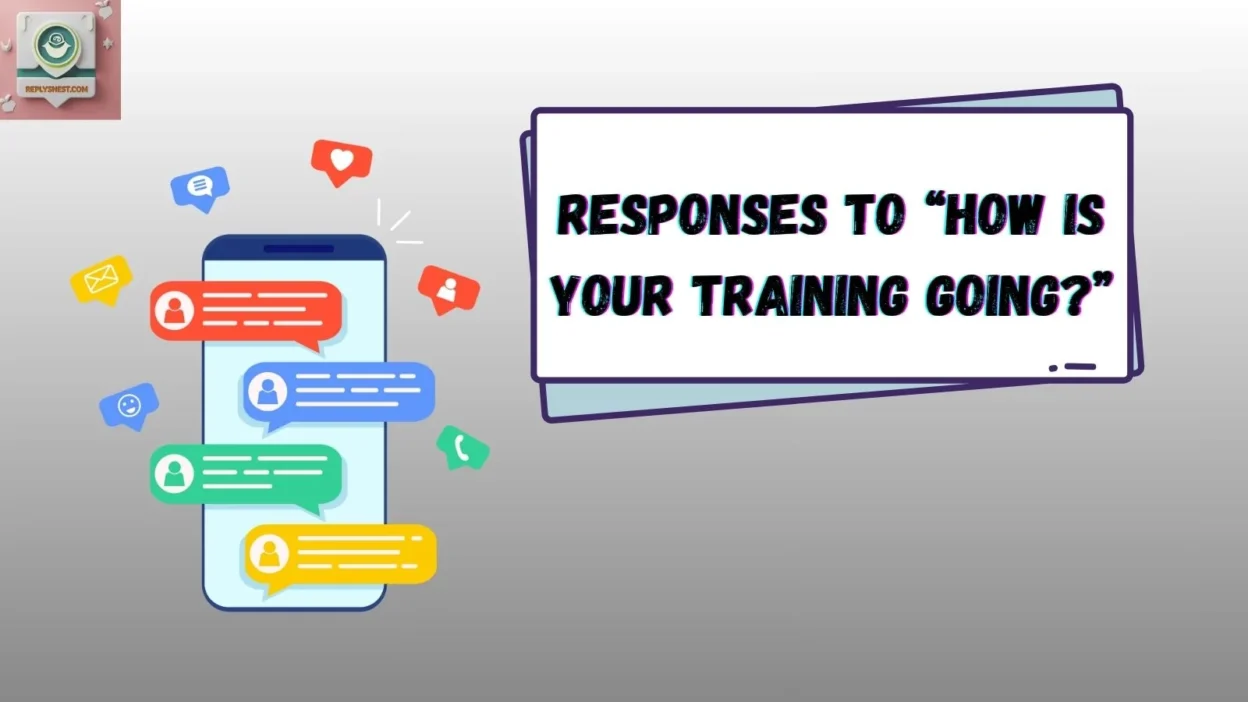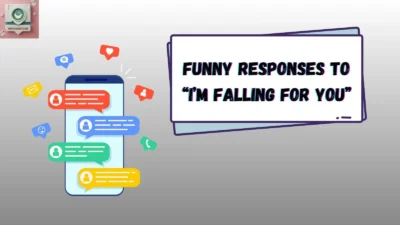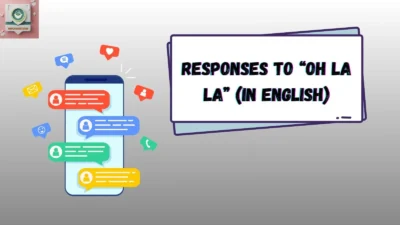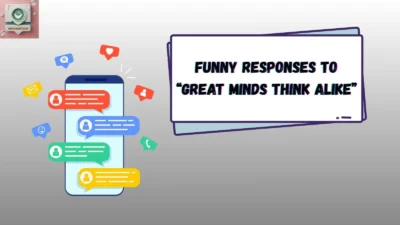When someone asks “How is your training going?”, it’s usually more than just small talk—it’s a genuine check-in on your progress, discipline, and well-being. Whether you’re training for a new job, marathon, fitness goal, or personal growth, your response can reveal your mindset and motivation. Responses to “How Is Your Training Going?”.
When someone asks, “How’s your training going?,” it’s a chance to highlight your progress, growth, and even your challenges with honesty and gratitude. You can share how things are going well, thank them for asking, and mention how this journey has been both tough and rewarding. Personally, I’ve learned that staying positive, focused, and truthful in such conversations creates a comfortable interaction that reflects your confidence and motivation.
Whether you’re in a sport, academy, or fitness environment, a concise, honest, and upbeat response helps the person you’re speaking with understand your situation and progress without too much detail. You might say something like, “It’s been a great experience so far—still improving every day,” which feels natural, brief, and direct, yet reflective.
In my own experience, there were times when training felt pretty busy, and I was struggling to settle in or adapting to new rules, styles, and conditions. But through patience, persistence, and steady effort, I saw improvement—both physical and mental. When things got difficult, I found help, took advice, and stayed hopeful even when the results weren’t immediate.
Over time, learning from each session and challenge made the experience more beneficial, educational, and even transformative. Whether you’re working toward a goal, improving your skills, or simply enjoying the process, remember to express your feelings with honesty, self-awareness, and a positive mindset—because your fitness journey is a reflection of your strength, discipline, and resilience.
1. “It’s going great, I’m learning a lot every day.”
Best Use: When you want to sound positive and professional—perfect for colleagues or mentors.
Not to Use: If you’re actually struggling; it might sound dishonest.
Other Ways to Say: “I’m making steady progress.” / “It’s been a great learning curve.”
Example:
“It’s going great, I’m learning a lot every day—it’s challenging but rewarding.”
2. “It’s tough, but I’m getting stronger with each session.”
Best Use: When your training is physically or mentally demanding.
Not to Use: In casual or light-hearted chats where intensity might feel heavy.
Other Ways to Say: “Every session tests me, but I’m improving.”
Example:
“It’s tough, but I’m getting stronger with each session—progress feels amazing.”
3. “I’ve hit a few bumps, but I’m staying consistent.”
Best Use: To show resilience when things aren’t perfect.
Not to Use: When you want to hide challenges or sound overly confident.
Other Ways to Say: “There are challenges, but I’m pushing through.”
Example:
“I’ve hit a few bumps, but I’m staying consistent and learning from each mistake.”
4. “It’s going better than I expected!”
Best Use: When your training is exceeding expectations.
Not to Use: If you’re in early stages—it might sound premature.
Other Ways to Say: “I’m pleasantly surprised by how well it’s going.”
Example:
“It’s going better than I expected—I didn’t think I’d adapt this quickly.”
5. “Honestly, it’s challenging, but I’m proud of my progress.”
Best Use: When you want to express honesty and humility.
Not to Use: If you’re just making small talk; it might feel too deep.
Other Ways to Say: “It’s not easy, but I’m proud of how far I’ve come.”
Example:
“Honestly, it’s challenging, but I’m proud of my progress so far.”
6. “It’s a work in progress, but I’m committed.”
Best Use: When you want to show perseverance.
Not to Use: If you’re being asked for measurable results.
Other Ways to Say: “I’m still refining things, but I’m all in.”
Example:
“It’s a work in progress, but I’m committed to seeing it through.”
7. “I’m starting to see results, which keeps me motivated.”
Best Use: To show enthusiasm and visible progress.
Not to Use: Early in the process when results aren’t noticeable yet.
Other Ways to Say: “Seeing progress keeps me going.”
Example:
“I’m starting to see results, which keeps me motivated to do even better.”
8. “It’s been a journey—some highs, some lows.”
Best Use: When you want to keep it real but reflective.
Not to Use: When you’re talking to someone who expects a quick update.
Other Ways to Say: “It’s been a mix, but I’m learning with every step.”
Example:
“It’s been a journey—some highs, some lows, but definitely worth it.”
9. “Slowly but surely, I’m getting there.”
Best Use: When progress feels steady but gradual.
Not to Use: When your training is at a fast pace—it might sound mismatched.
Other Ways to Say: “Bit by bit, I’m improving.”
Example:
“Slowly but surely, I’m getting there—patience is key.”
10. “It’s intense, but I’m loving the challenge.”
Best Use: For high-intensity training or tough projects.
Not to Use: When you dislike the training—it might sound forced.
Other Ways to Say: “It’s demanding, but I enjoy the process.”
Example:
“It’s intense, but I’m loving the challenge—it pushes me out of my comfort zone.”
11. “I’m finding my rhythm now.”
Best Use: When you’ve just started but are adjusting well.
Not to Use: If you’re completely lost—it could sound misleading.
Other Ways to Say: “I’m settling into the flow.”
Example:
“I’m finding my rhythm now—it’s starting to feel natural.”
12. “It’s been eye-opening—I’ve learned a lot about myself.”
Best Use: When your training involves personal growth or mindset work.
Not to Use: For purely technical training sessions.
Other Ways to Say: “It’s been really insightful.”
Example:
“It’s been eye-opening—I’ve learned a lot about myself and my limits.”
13. “I’m pushing myself, and it feels great.”
Best Use: When you’re feeling confident and strong.
Not to Use: If you’re recovering from burnout or fatigue.
Other Ways to Say: “I’m stepping outside my comfort zone.”
Example:
“I’m pushing myself, and it feels great to see what I’m capable of.”
14. “It’s getting easier with time.”
Best Use: To show gradual mastery.
Not to Use: If your training is still chaotic or new.
Other Ways to Say: “I’m getting the hang of it.”
Example:
“It’s getting easier with time—the repetition really helps.”
15. “I’m taking it one step at a time.”
Best Use: When progress feels slow or uncertain.
Not to Use: When you’re discussing a project requiring speed.
Other Ways to Say: “I’m pacing myself.”
Example:
“I’m taking it one step at a time—no rush, just focus.”
16. “I’m learning from my mistakes, which is humbling.”
Best Use: When reflecting on challenges.
Not to Use: If you’re in a formal setting where vulnerability feels risky.
Other Ways to Say: “I’m growing through trial and error.”
Example:
“I’m learning from my mistakes—it’s a humbling but valuable process.”
17. “It’s going steady, just like I planned.”
Best Use: When your routine is consistent and effective.
Not to Use: When you’re struggling to stay on track.
Other Ways to Say: “Everything’s on schedule.”
Example:
“It’s going steady, just like I planned—consistency pays off.”
18. “It’s been fun! I actually enjoy it.”
Best Use: When your training aligns with your interests.
Not to Use: If you’re clearly exhausted or complaining elsewhere.
Other Ways to Say: “I’m genuinely enjoying the process.”
Example:
“It’s been fun! I actually enjoy the learning part more than I thought.”
19. “It’s been a rollercoaster, but I’m still on the ride.”
Best Use: To express ups and downs humorously.
Not to Use: In strictly professional settings.
Other Ways to Say: “It’s been unpredictable, but I’m sticking with it.”
Example:
“It’s been a rollercoaster, but I’m still on the ride—that’s what growth feels like.”
20. “It’s going smoothly now that I’ve found my pace.”
Best Use: When you’ve finally balanced your effort and results.
Not to Use: Early stages of training.
Other Ways to Say: “Things are finally clicking into place.”
Example:
“It’s going smoothly now that I’ve found my pace and rhythm.”
21. “I’m grateful for how much I’ve learned.”
Best Use: When reflecting positively.
Not to Use: When you want to keep it lighthearted.
Other Ways to Say: “I appreciate all the lessons along the way.”
Example:
“I’m grateful for how much I’ve learned—it’s been a meaningful journey.”
22. “It’s been rewarding—I can see real progress.”
Best Use: When you want to highlight achievement.
Not to Use: If there’s been no tangible improvement yet.
Other Ways to Say: “It’s paying off—I’m seeing results.”
Example:
“It’s been rewarding—I can see real progress in my stamina and mindset.”
23. “It’s keeping me on my toes, but I’m enjoying it.”
Best Use: When it’s challenging but exciting.
Not to Use: If you feel overwhelmed.
Other Ways to Say: “It’s demanding, but I’m engaged.”
Example:
“It’s keeping me on my toes, but I’m enjoying every moment.”
24. “It’s been surprisingly fun—I didn’t expect to like it this much.”
Best Use: When your training turned out better than expected.
Not to Use: If it’s actually frustrating.
Other Ways to Say: “It’s been unexpectedly enjoyable.”
Example:
“It’s been surprisingly fun—I didn’t expect to like it this much.”
25. “It’s shaping up well—I can see myself improving.”
Best Use: To show visible growth.
Not to Use: In early stages when progress isn’t clear yet.
Other Ways to Say: “It’s coming together nicely.”
Example:
“It’s shaping up well—I can see myself improving each week.”
Conclusion
When someone asks “How is your training going?”, they’re often inviting you to share your journey, mindset, and effort. Whether you respond with honesty, enthusiasm, or humor, the best replies show self-awareness, optimism, and authenticity.
From personal experience, I’ve learned that people appreciate when your response feels real—not robotic or overly rehearsed. A simple, “It’s going well, I’m proud of how far I’ve come,” often opens a genuine, human conversation.
The key is balance: be proud, be honest, and be human.
10 Editor’s Picks (and Why People Love Them)
- “It’s tough, but I’m getting stronger with each session.” — Motivational and real.
- “It’s going great, I’m learning a lot every day.” — Uplifting and professional.
- “I’ve hit a few bumps, but I’m staying consistent.” — Shows resilience.
- “Slowly but surely, I’m getting there.” — Encouraging long-term goals.
- “It’s intense, but I’m loving the challenge.” — High energy, inspiring.
- “I’m finding my rhythm now.” — Simple and optimistic.
- “It’s been eye-opening—I’ve learned a lot about myself.” — Emotionally intelligent.
- “I’m grateful for how much I’ve learned.” — Reflective and mature.
- “It’s going smoothly now that I’ve found my pace.” — Balanced and calm.
- “It’s been a rollercoaster, but I’m still on the ride.” — Relatable and authentic.



